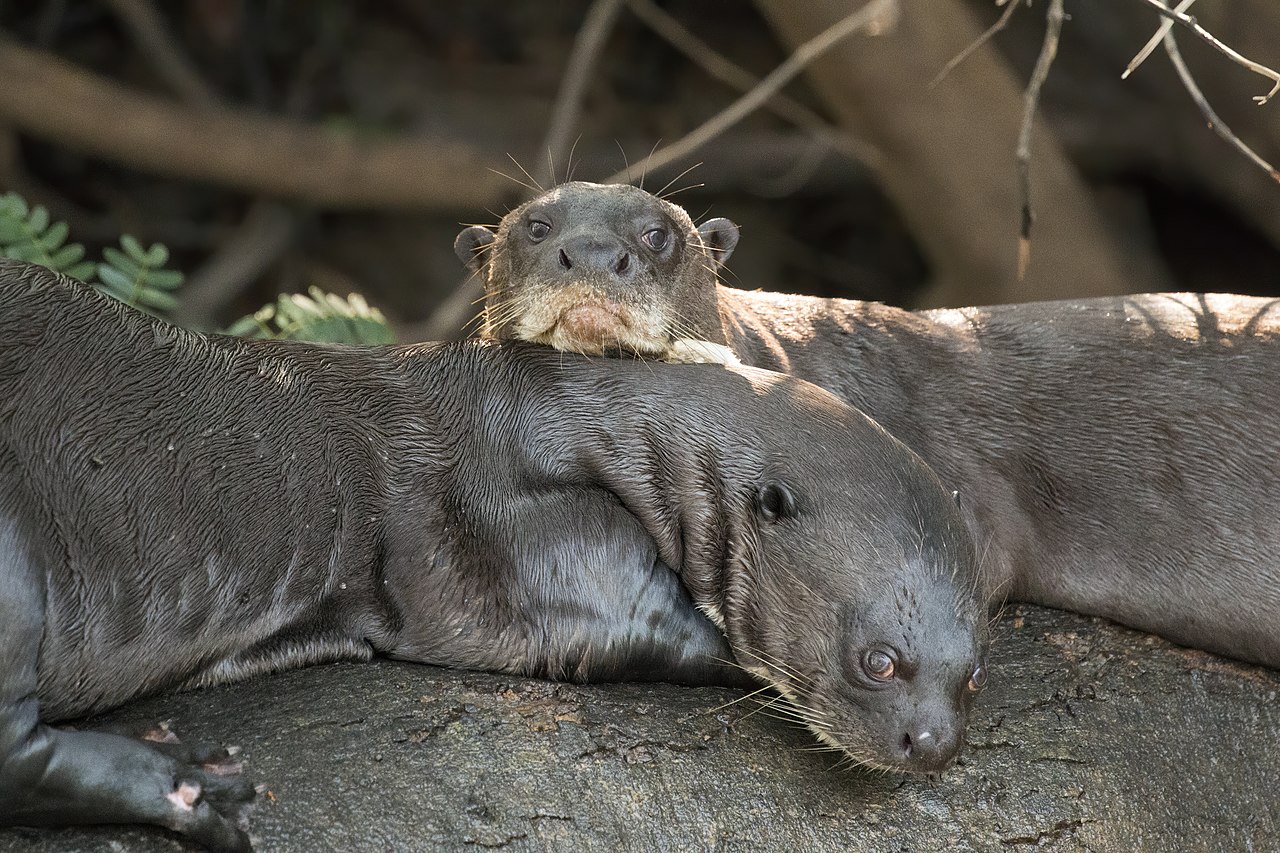- The giant otter, or Pteronura brasiliensis, is the largest species of otter in the world.
- They are native to South America and can be found in freshwater habitats such as rivers, lakes, and swamps.
- Giant otters have a distinctive appearance with long, slender bodies, webbed feet, and a flattened tail.
- They have dense, waterproof fur that helps keep them warm and dry in the water.
- These otters have a highly specialized diet consisting mainly of fish, but they also consume crustaceans, amphibians, and even small caimans.
- Giant otters are social animals and live in family groups called “rafts” that can consist of up to 20 individuals.
- They communicate with each other using various vocalizations, including whistles, screams, and growls.
- These otters are known for their excellent swimming abilities and can reach speeds of up to 11 miles per hour in the water.
- Giant otters have long, sharp teeth that they use for catching and consuming their prey.
- They have a playful nature and often engage in social activities such as sliding down muddy banks or engaging in water games.
- Giant otters construct dens along the water’s edge, which provide shelter and protection for their young.
- These otters are highly territorial and will defend their territories from other otter groups.
- Giant otters have a lifespan of around 10 to 15 years in the wild.
- They have a complex mating system, with dominant males mating with multiple females within their group.
- The female gives birth to one to five pups, which are cared for by the entire otter group.
- Giant otters are known for their loud vocalizations, which can be heard over long distances and serve as a means of communication and territorial defense.
- They have an acute sense of hearing and sight, allowing them to locate prey and detect potential threats.
- Giant otters have a strong bonding within their family groups, often engaging in grooming and physical contact.
- They have a specialized grooming routine that involves rubbing their fur with their paws and rolling in the water to remove dirt and parasites.
- These otters have been heavily hunted for their fur in the past, leading to population declines and conservation concerns.
- Conservation efforts have been implemented to protect and restore the habitat of giant otters, as well as to combat illegal hunting and trade.
- Giant otters are excellent hunters and can consume up to 4-5 kilograms (9-11 pounds) of fish per day.
- They are highly skilled at catching fish, using their sharp teeth and strong jaws to secure their prey.
- Giant otters have a large, strong tail that helps them maneuver and swim through the water with agility and speed.
- They have been observed using tools, such as rocks, to crack open hard-shelled prey.
- Giant otters are known for their strong maternal instincts, with females providing extensive care and protection to their young.
- They have been recorded diving to depths of up to 60 feet in search of food.
- Giant otters have webbed feet that aid in swimming and navigating through the water.
- They have a playful and curious nature, often engaging in social interactions and exploring their surroundings.
- Giant otters have an important ecological role as top predators, helping to regulate fish populations and maintain the health of freshwater ecosystems.
- They have specialized adaptations for swimming, such as retractable claws and streamlined bodies.
- Giant otters have a high metabolic rate, requiring them to consume a large amount of food to meet their energy needs.
- They have a distinctively loud and melodious call, often used to communicate with other members of their group.
- Giant otters have a layer of fat under their skin, providing insulation and buoyancy in the water.
- They have been known to share communal latrines, which serve as important scent markers and communication points.
- Giant otters have a dense fur coat that traps air, providing additional buoyancy and insulation while swimming.
- They are skilled at catching fast-swimming prey, using their agility and teamwork to corner and capture fish.
- Giant otters have a playful courtship behavior that involves chasing and wrestling with potential mates.
- They have been observed using their tail as a rudder while swimming, aiding in steering and maneuverability.
- Giant otters have been successfully reintroduced to some areas where they had previously gone extinct due to conservation efforts.
- They have a keen sense of smell, allowing them to locate prey and detect the presence of other animals.
- Giant otters have few natural predators, although they may occasionally encounter caimans or jaguars in their habitats.
- They are excellent divers, able to hold their breath for several minutes and swim underwater for extended periods.
- Giant otters are diurnal, being most active during daylight hours and resting or grooming during the night.
- They have a specialized fur pattern that includes unique markings on their throat, helping to distinguish individuals from one another.
- Giant otters have been studied for their complex social behaviors and the unique vocal repertoire within their groups.
- They are considered an umbrella species, meaning their conservation benefits other species that share their habitat.
- Giant otters have been featured in popular culture, appearing in books, documentaries, and films.
- They have a strong sense of community, with individuals working together to hunt, care for their young, and protect their territory.
- Giant otters are a symbol of the incredible diversity and beauty of South America’s freshwater ecosystems, and efforts are underway to protect and preserve these fascinating creatures.
Facebook Comments


































